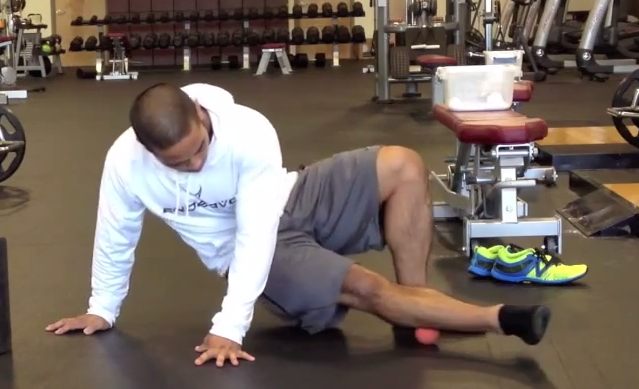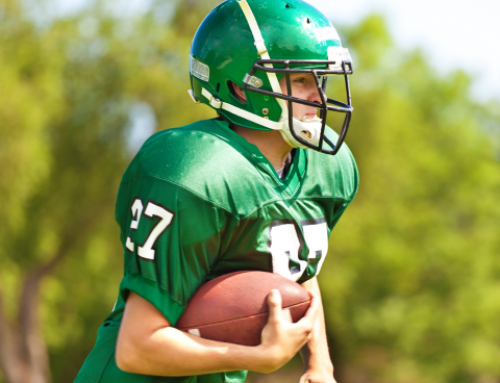Fix 3 Common Ankle Problems to Prevent Injury
Ankles are the lifeline for almost every athletic movement.
The lower compartment of the leg, which includes the ankles and feet, is involved with force absorption (landing from jumps, eccentrically loading during sprints) and with force production (jumping, pushing the ground away during Deadlifts, Squats and Lunges). If your ankles are jacked up, you won’t be able to do any of these athletic movements.
RELATED: 10-Minute Ankle-Strengthening Program
During running or sprinting, the ankles can be the source of a few common errors:
- They lack appropriate range of motion
- Their musculature lacks appropriate strength or control
- The ankle musculature cannot properly transfer ground reaction forces to the rest of the body, namely the knees, hips and abdominals
Lack of Range of Motion in Bones of the Ankle
There are times when range of motion is limited by bony approximations. Ankle dysfunction can include lack of motion in dorsiflexion (pointing the toes up), or in the lower leg bones (tibia and fibula). If these are true, joint mobilization might be enhanced by a physical therapist or chiropractor with the appropriate skillset. If range of motion is limited by stiff or tight musculature in the lower leg, improving elasticity and loosening the muscles might alleviate the problem and extend an athlete’s range of motion.
RELATED: Avoid Injuries With Dwyane Wade’s Ankle Strength Routine

Lack of Strength or Control
As a coach and trainer, I can often improve whatever issues an athlete has by simply giving him or her more ability to control whatever may not be “strong” enough.
Below are drills to improve control of ankle range of motion.
RELATED: Prevent or Rehab Ankle Sprains With These Strategies
After integrating new movement patterns of the lower leg, it may be feasible to improve mechanics of the hip and abdominal musculature through similar means, by addressing any joint or soft tissue issues—which could involve the knee, hip or core—related to the problematic ankle.
Afterward, performing exercises in a more integrated approach may increase the efficiency with which the ankles are working.
After these types of exercises, it is necessary to load the body to improve high velocity and force production capacity, since many game scenarios require high rates of speed and split-second decisions that cannot be mimicked in the gym.
- Single-Leg Hop
- High Knee Skip
- Box Jump
- Lateral Bounds
Regarding plyometrics, various “contacts” have been suggested based on the athlete’s training age, physiological age and goals. With respect to landing positions, genu valgus (i.e., knees caving in) is inappropriate for landing—and for producing force.
However, not much has been suggested to address the problem of foot collapse, or over-pronation, which can lead to the collapse of the medial arch. A lack of proprioception can sometimes lead to reduced force production, which, in athletics, just means you are slow.
Bottom line: Move well, move often and move with intensity!
RECOMMENDED FOR YOU
MOST POPULAR
Fix 3 Common Ankle Problems to Prevent Injury
Ankles are the lifeline for almost every athletic movement.
The lower compartment of the leg, which includes the ankles and feet, is involved with force absorption (landing from jumps, eccentrically loading during sprints) and with force production (jumping, pushing the ground away during Deadlifts, Squats and Lunges). If your ankles are jacked up, you won’t be able to do any of these athletic movements.
RELATED: 10-Minute Ankle-Strengthening Program
During running or sprinting, the ankles can be the source of a few common errors:
- They lack appropriate range of motion
- Their musculature lacks appropriate strength or control
- The ankle musculature cannot properly transfer ground reaction forces to the rest of the body, namely the knees, hips and abdominals
Lack of Range of Motion in Bones of the Ankle
There are times when range of motion is limited by bony approximations. Ankle dysfunction can include lack of motion in dorsiflexion (pointing the toes up), or in the lower leg bones (tibia and fibula). If these are true, joint mobilization might be enhanced by a physical therapist or chiropractor with the appropriate skillset. If range of motion is limited by stiff or tight musculature in the lower leg, improving elasticity and loosening the muscles might alleviate the problem and extend an athlete’s range of motion.
RELATED: Avoid Injuries With Dwyane Wade’s Ankle Strength Routine

Lack of Strength or Control
As a coach and trainer, I can often improve whatever issues an athlete has by simply giving him or her more ability to control whatever may not be “strong” enough.
Below are drills to improve control of ankle range of motion.
RELATED: Prevent or Rehab Ankle Sprains With These Strategies
After integrating new movement patterns of the lower leg, it may be feasible to improve mechanics of the hip and abdominal musculature through similar means, by addressing any joint or soft tissue issues—which could involve the knee, hip or core—related to the problematic ankle.
Afterward, performing exercises in a more integrated approach may increase the efficiency with which the ankles are working.
After these types of exercises, it is necessary to load the body to improve high velocity and force production capacity, since many game scenarios require high rates of speed and split-second decisions that cannot be mimicked in the gym.
- Single-Leg Hop
- High Knee Skip
- Box Jump
- Lateral Bounds
Regarding plyometrics, various “contacts” have been suggested based on the athlete’s training age, physiological age and goals. With respect to landing positions, genu valgus (i.e., knees caving in) is inappropriate for landing—and for producing force.
However, not much has been suggested to address the problem of foot collapse, or over-pronation, which can lead to the collapse of the medial arch. A lack of proprioception can sometimes lead to reduced force production, which, in athletics, just means you are slow.
Bottom line: Move well, move often and move with intensity!
[cf]skyword_tracking_tag[/cf]










